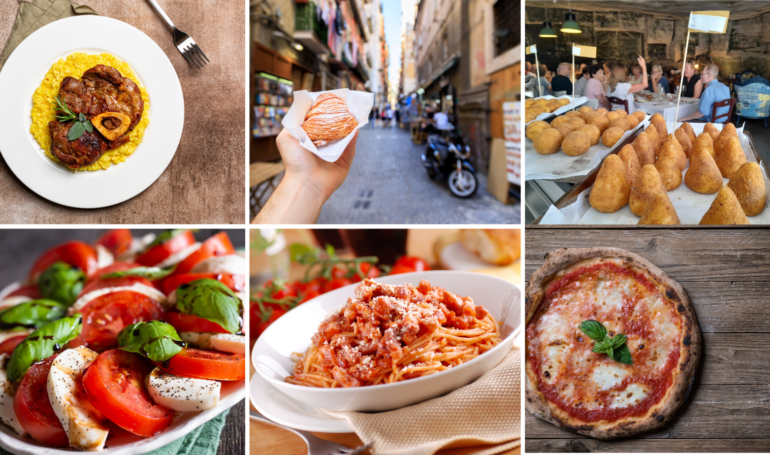
How Italian Food Culture Differs by Region
If you are a repeat participant on my culinary tours (and I know many of you are), you know that Italy is a country known for its rich and diverse culinary traditions, with each region offering us unique dishes, flavors, and ingredients. We eat differently from region to region, and that’s one of the greatest gifts Italy offers us! From the seafood-laden plates of the Amalfi Coast to the hearty, meat-focused cuisine of Emilia Romagna, Italian food culture is deeply rooted in history, geography, and local customs. In this post, we will explore how Italian food varies from region to region, showcasing the unique flavors that make Italy one of the most beloved food destinations in the world.
Northern Italy: Rich, Creamy, and Hearty
The cuisine of Northern Italy is heavily influenced by its cooler climate and proximity to neighboring countries such as France, Switzerland, and Austria. As a result, the dishes here tend to be richer, creamier, and more meat-centric.
Lombardy is famous for risotto alla milanese, a creamy rice dish infused with saffron, and ossobuco, a slow-cooked veal shank served with gremolata. Dairy is a staple in this region, with cheeses like Gorgonzola, Taleggio, and Grana Padano playing a significant role in its cuisine.
Piedmont is known for its luxurious ingredients like white truffles from Alba and Bagna Cauda, a warm garlic and anchovy dip served with vegetables. The region also boasts fine wines like Barolo and Barbaresco.
Veneto offers dishes such as baccalà mantecato (creamy salt cod spread) and risi e bisi (rice and peas). Venetian cuisine includes a mix of seafood and hearty rice-based dishes rather than pasta.
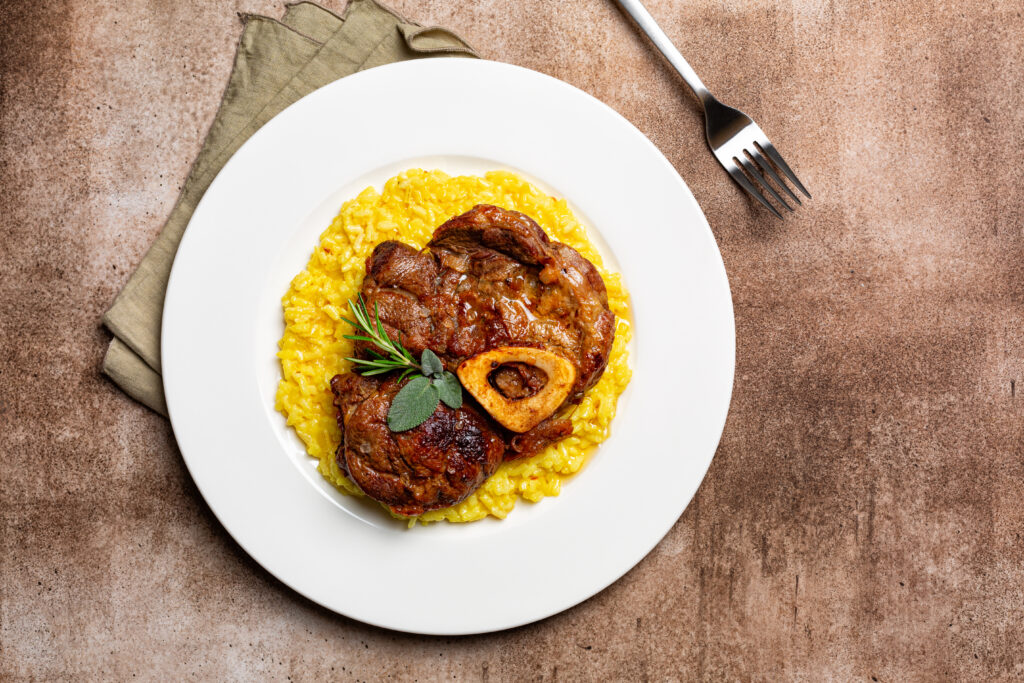
Picture Credit: Olga Mazyarkina.
Central Italy: Pasta, Olive Oil, and Simplicity
Moving towards the center of Italy, the food becomes more balanced, featuring a mix of meats, legumes, and fresh vegetables. Pasta is a major staple, often prepared with simple yet flavorful sauces.
Tuscany is the land of bistecca alla fiorentina, a thick-cut, grilled T-bone steak, and ribollita, a bread and vegetable soup. Olive oil, rather than butter, is the key fat used in cooking here, reflecting the Mediterranean influence.
Lazio, home to Rome, is famous for its pasta dishes, including carbonara, cacio e pepe, amatriciana, and gricia. These pasta dishes emphasize cheese (Pecorino Romano) and cured meats like guanciale.
Umbria, often referred to as the “green heart of Italy,” is known for its truffles, lentils, and pork-based dishes such as porchetta, a slow-roasted, herb-infused pork roll.
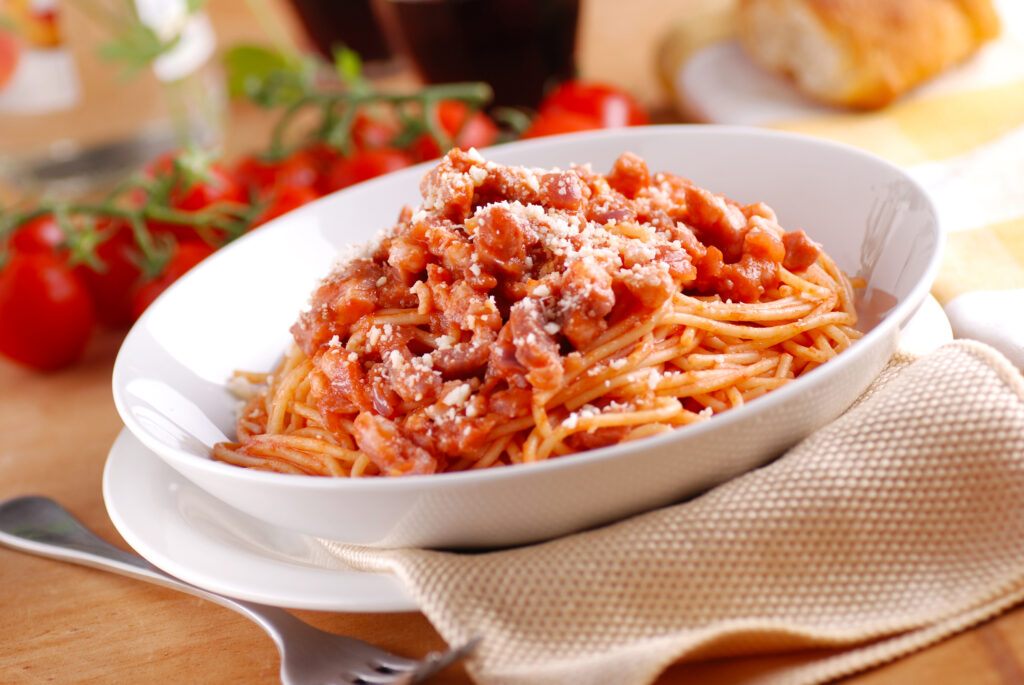
Picture Credit: Francesco Vignali.
Southern Italy: Bold Flavors, Tomatoes, and Seafood
As we move further south, the cuisine becomes spicier, more tomato-based, and heavily reliant on seafood. The warmer climate allows for the cultivation of sun-ripened produce, including tomatoes, eggplants, and peppers.
Campania, home to Naples, is the birthplace of pizza Margherita and sfogliatella (a crispy, layered pastry filled with ricotta). The region is also known for mozzarella di bufala, an essential ingredient in dishes like insalata caprese.
Calabria, located at the “toe” of Italy’s boot, is famous for its spicy flavors, particularly ‘nduja, a spreadable, fiery pork sausage. Swordfish and chili peppers are commonly used in its cuisine.
Puglia, the “heel” of the boot, is renowned for its orecchiette pasta, often served with rapini (broccoli rabe) and garlic. The region also produces some of Italy’s finest olive oils and burrata cheese.
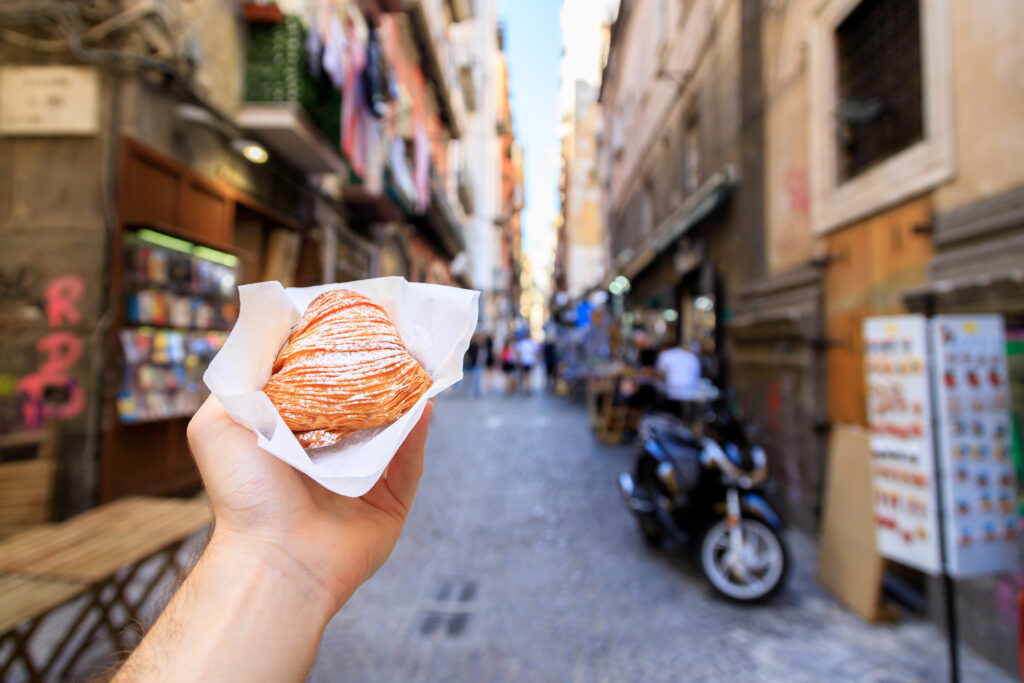
The Islands: Sicily and Sardinia
Italy’s islands have developed unique culinary traditions influenced by various cultures, including Arab, Spanish, and Greek flavors.
Sicily offers an eclectic mix of sweet and savory dishes, such as arancini (fried rice balls), caponata (a sweet-and-sour eggplant dish), and cassata (a rich ricotta-based cake). Seafood is prominent, with dishes like pasta con le sarde (pasta with sardines, fennel, and raisins).
Sardinia is known for its robust, rustic cuisine, featuring porceddu (roast suckling pig), pane carasau (crispy flatbread), and bottarga (cured fish roe). Sardinian cuisine is heavily influenced by its pastoral traditions, making lamb and sheep’s milk cheeses like Pecorino Sardo staples in the diet.
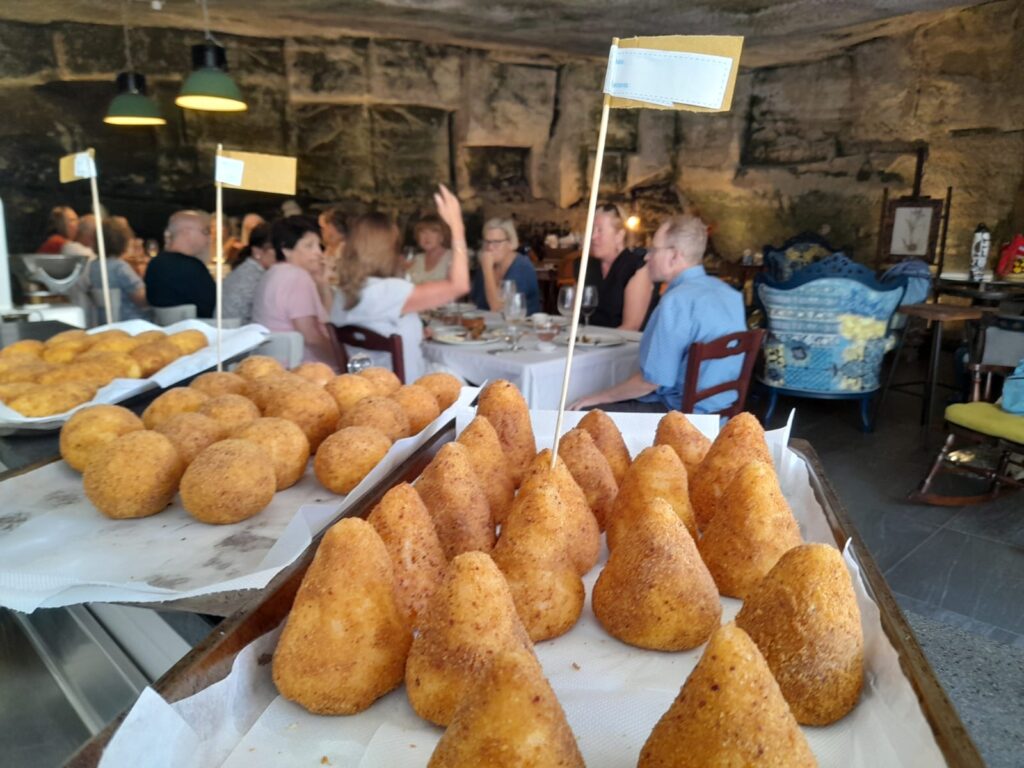
Picture Credit: Lazy Italian Culinary Adventures.
Conclusion: A Culinary Journey Through Italy
Italy’s food culture is as diverse as its landscapes, with each region offering a distinct culinary identity shaped by history, geography, and local traditions. Whether indulging in the creamy risottos of the north, the pasta-centric dishes of the center, or the bold, spicy flavors of the south, there is something for every palate in Italy. Exploring these regional specialties not only enhances our appreciation for Italian cuisine but also provides a deeper understanding of the country’s rich cultural heritage.
If you ever have the opportunity to travel through Italy, be sure to taste the local specialties of each region—you’ll discover that there’s no single “Italian cuisine,” but rather a beautiful tapestry of flavors that define this gastronomic paradise.

What to Pack for Italy
Cosa Mettere in Valigia per l'Italia
Everyone is always asking me what they should pack for Italy,
so I’ve created a quick reference guide that you can use for your next trip.
Hint: You don’t need nearly as much as you think you do!

Leave a Reply